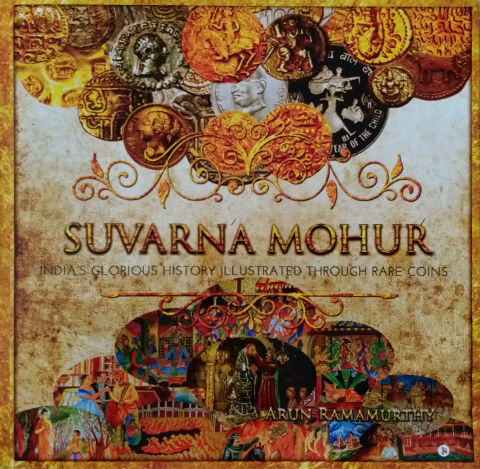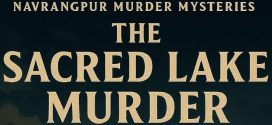As said by wise sages; Dharma, Artha, Kama, and Moksha are the four main aspects of the life. While people tend to differentiate between them, I personally believe that they are all interlinked and cannot be separated. Sometimes, people focus on what they have personal likes for, and sometimes the things could be agenda driven, but, everyone is entitled to their own opinions and inclinations.
Artha – is definitely the way of living which affects almost everyone directly. Whatever we say philosophically, but practically, it is almost impossible to have an existence of the culture, the society or even the life. That’s why an entire main-stream of education is dedicated to “commerce“.
India, being the land of learned and wise fellows, never neglected the importance of “Artha” aspect of the life. And, arguably, the best book on the same is written by a scholar named Chanakya aka Kautilya aka Vishnugupta, named “ArthShashtra” which is well respected by the scholars of even the modern time.
There was a time when people learnt to exchange the things to suit their needs and eventually they found it is the best way to get what you want but unable to produce. Possible, the first roots of commerce lies in such exchanges. People used to trade grains in exchange of clothes, milk in exchange of earthen pots, and… the list is everlasting.
Eventually, they came to the conclusion that there is a need of having something which is of a uniform value and can be exchanged in order to get anything. And there came the existence of coins or Mohurs. Eventually, the size, shape, value and the metal are changed but they lead the world to what it is today.
Studying coins from different eras and geographical locations can expose us to history in a quite interesting manner. So, when we’ve heard about a book named “Suvarna Mohur” with a tagline “India’s glorious history illustrated through rare coins” by debutante author “Arun Ramamurthy“; we were curious to explore it.
The author gladly shared a copy of the book with us in exchange for an honest and unbiased book review, which we are reputed for, we were quite enthusiastic to explore it.
Fortunately, from our team, I got a chance to read (or I would better say, explore) the book and here are my views about the same.
| Book Title | : | Suvarna Mohur : India’s Glorious History Illustrated through Rare Coins |
| Author | : | Arun Ramamurthy |
| Publishers | : | Notion Press; Published: (2018) |
| # of Pages | : | 2276 KB, 86 (Kindle EBook) |
| Purchase Link(s) | : |
Let us take a look at the book cover.

Suvarna Mohur: India’s Glorious History Illustrated through Rare Coins by Arun Ramamurthy | Book Cover
The most valuable trade material mankind has used with the most conviction is Gold. The word “Suvarna Mohur” literally can be translated as “Gold Coin”. And thus, in addition to have some gold coins and historical illustrations, what could have been the most appropriate color scheme than the Golden?!
As you can see, the cover page is dominated by the golden color, coins, and illustrations. And thus, the perfect representation of the book content and theme. The colors of the illustrations are so dominating that the name of the author is hard to read, it could have been taken care of. But, overall, the cover page is impressive.
Now, let us take a look at the book content.
This Is Here In For You
Book Plot:
As mentioned earlier, trading is an essential requirement for humans to survive. The references to the same are found in ancient Indian scriptures like Rigveda also. Here is an example:
क इमं दशभिर ममेन्द्रं करीणाति धेनुभिः |
यदा वर्त्राणि जङघनद अथैनम मे पुनर ददत ||
The book is started with the reference to the same in a chapter named The Age Of Barter which refers the period before 600 BCE. It was the time when people used cows as a medium of exchange and the above mentioned Sanskrit Shloka can be translated as (as mentioned in the book):
Who for ten cows purchases from me this Indra who is mine?
When he has slain the “Vrtras”, let the buyer give him back to me.
With the passing time, humans keep finding more and more things which can be used for this “exchange” or “barter” purpose. The roots can be seen implanted into us very clearly if you pay attention to kids playing with stuff like pebbles.
The book then explores the time of Janapadas (around 600-400 BCE) with a reference to Gautam Buddha. It also refers to the Ashoka pillar at Sarnath while exploring the historical time of the Mauryan empire.
Then comes the time when Yavanas started coming to India not only as invaders but also as explorers and travelers. The book keeps exploring various periods including the modern times with the references to the coins released in the Year 2010 and 2011 also.
So it is overall a historic journey which I suggest you to better explore reading and witnessing the illustrations and maps referred to in the book.
While I agree that writing a book is quite a time consuming and challenging job. It is easy to give a few stars and sometimes possibly doing injustice to some of the efforts of the author. At the same time, when a person pays for the book, he is entitled to his opinions based on his/her reading experience. Book reviews, when are unbiased and genuine, helps the potentials readers and buyers to decide whether he/she should go ahead to spend his fortune and time for the book.
Coffee table books are a distinct genre and the books in this category happen to be quite costly. They are not meant to carry with you and read during travel (however, you can do it). This book is costly too.
The coffee table books are meant to be giving a fantastic reading experience and thus the page quality of this book is something worth a mention. Glossy finished pages of this will last for a long. The binding could have been better. As the book has many pages, if you keep using it with care, it will last for even longer.
The content is rich. Not only in terms of graphics or page quality but the information as well. For example, when talking about the coins from the time of Gautam Buddha, the book brings in the story (and graphics too) of Buddha and Angulimala. So, the book brings in information expected from it, along with, something which spread wisdom and spirituality too.
You cannot separate the political and geographical aspects of the history from the same of coins. The book thus brings some historical information in an “easy to absorb” manner. The maps of the period explored in the left page and the information on the right side will help you keep referring the things quite easily. Coins from Magadha Janapadas and Mauryan empire will make you remember the time. And the illustration of Sarnath pillar from where the national emblem of India (that is Bharat) is taken, will give you goosebumps.
These aspects of the book present you a memorable experience. And, you may think to buy it even for the kids and young adults, who will learn a lot from it. Of course, if your budget permits it.
I must add that, though, the book is meant to explore the history of coins in India only, it doesn’t shy away in providing the same from Greek and other civilizations when there is an influence or inspiration is found.
Sharing the content, maps and graphics from the book will contain spoilers, so let me share some external links here, from the official website for this book, which you can visit to know more about it.
External Links:
- Official Website
- Read more about: The 7 most expensive coins of India
- Read more about: 7 Incredible Facts About Indian Coins
- Read more about: The Greeks of India
- Read more about: The Unique Punch-Marked Coins of India
- Read more about: Ashoka : the Greatest King the world has known
Summary:
Overall a nice book which is full of information. The research work, the author and his team has done is reflected in the book. The quality of the book is worth a mention. And yes, it has a target group of readers, both in terms of book price and interest in the subject.
Around 7.5 to 8 out of 10 for the target readers.
Quick Purchase Links:
If you already have read the book do share your remarks and thoughts via comments below. Does this review help you in making your decision to buy or read the book? Do not forget to share this article with your friends over various social networks via Twitter, Facebook, Google Plus and others. And yes, you may like to subscribe to our RSS feeds and follow us on various Social networks to get latest updates for the site to land right in your mail box.
 ThinkerViews – Views And Reviews Personal views and reviews for books, magazines, tv serials, movies, websites, technical stuff and more.
ThinkerViews – Views And Reviews Personal views and reviews for books, magazines, tv serials, movies, websites, technical stuff and more.




